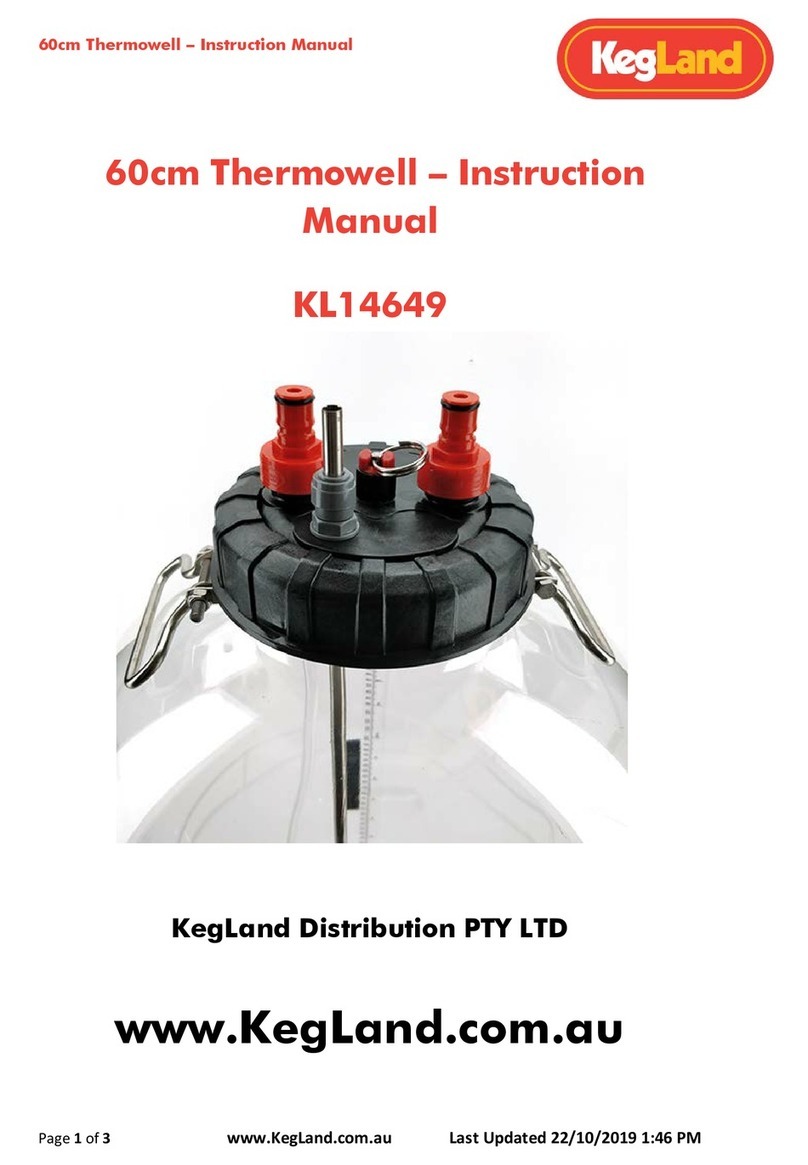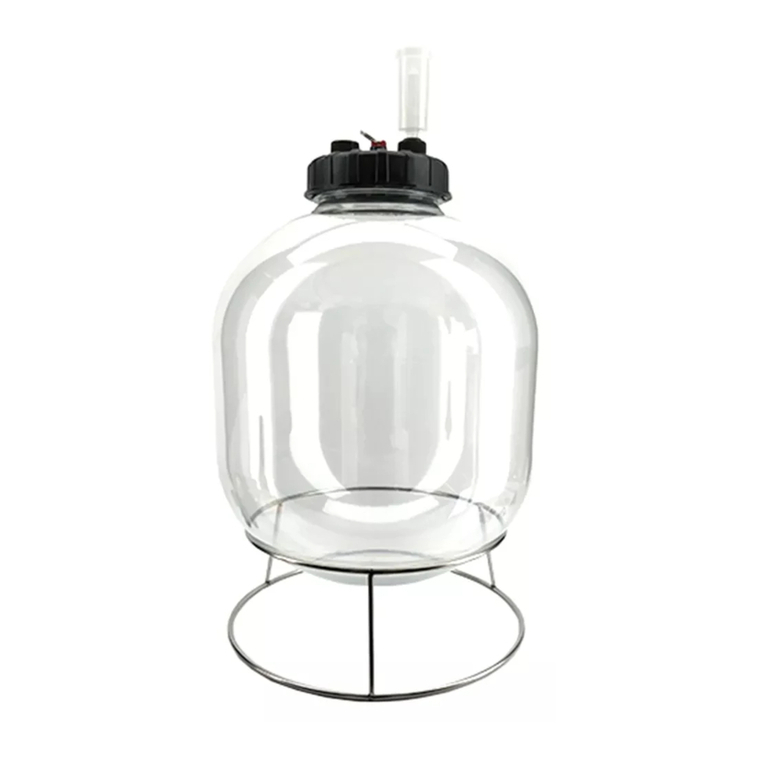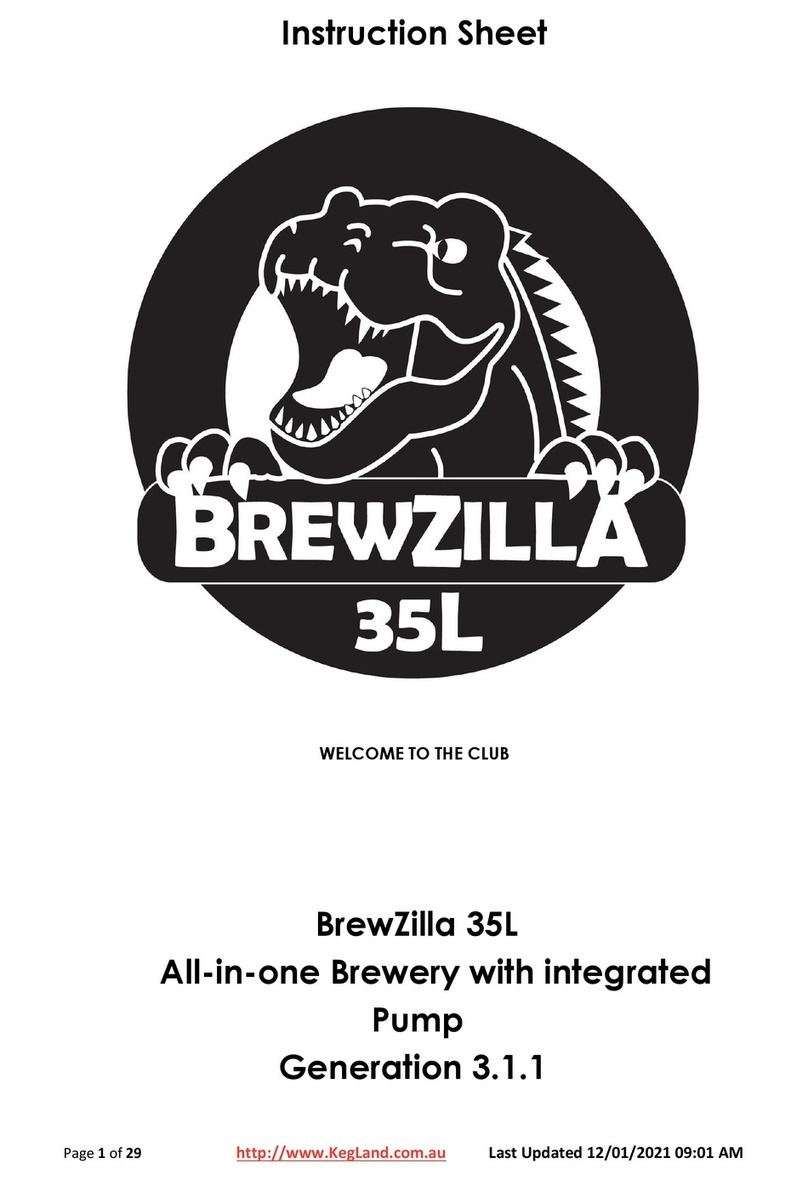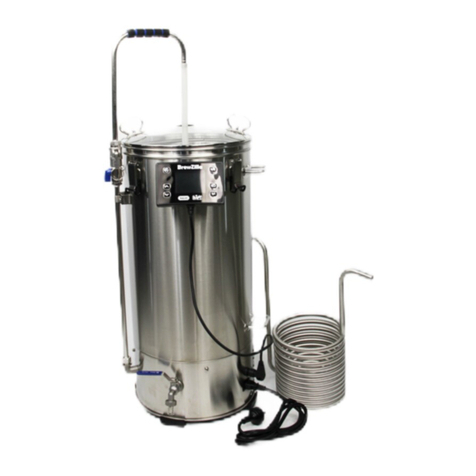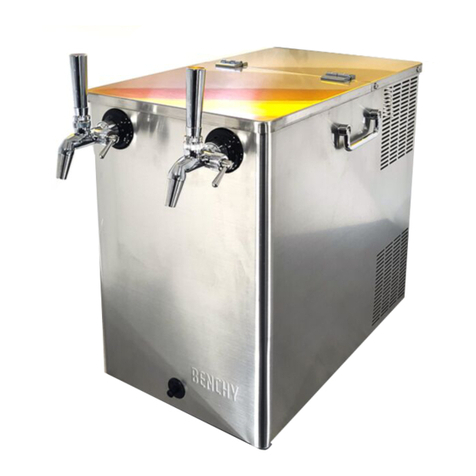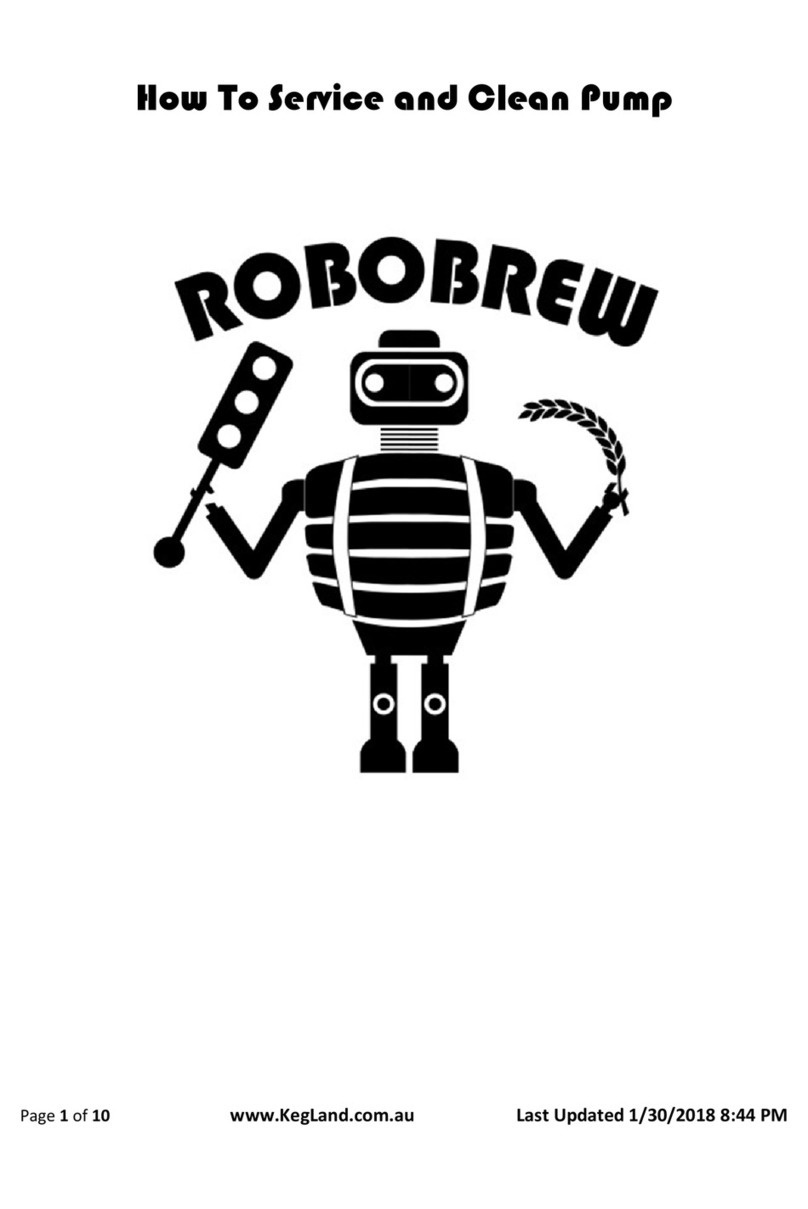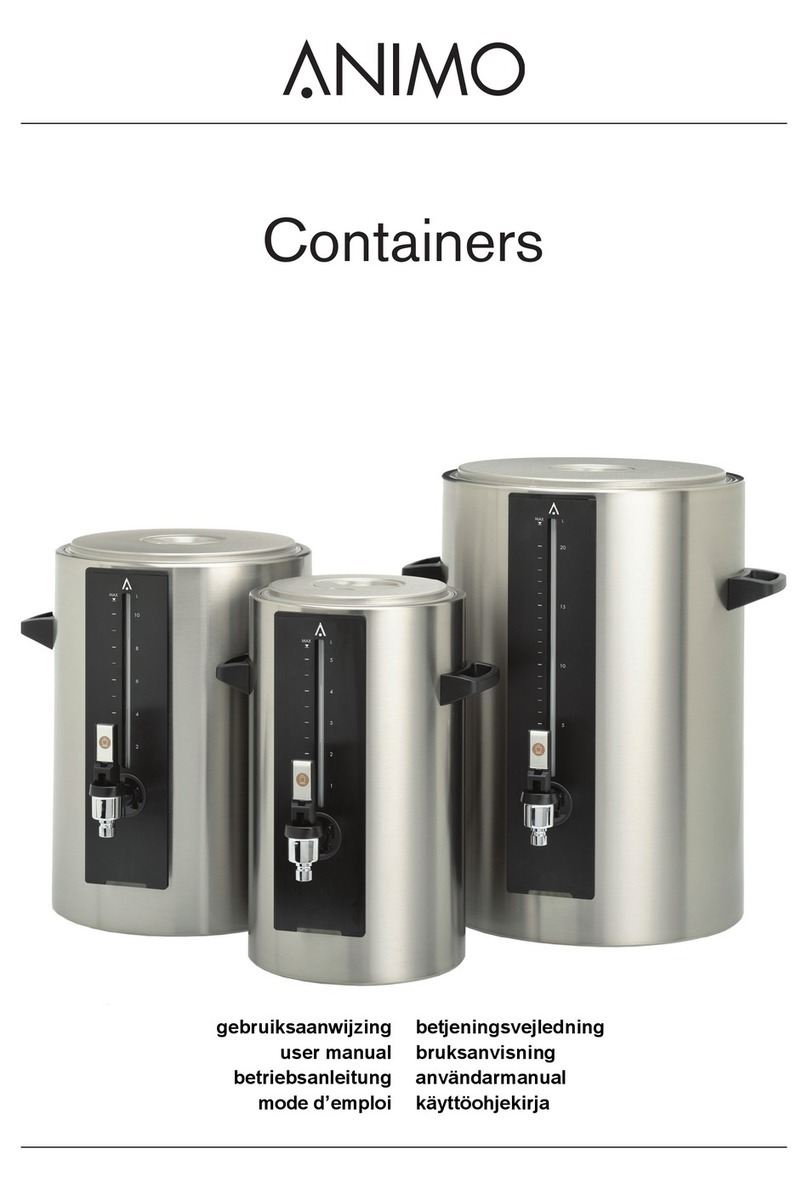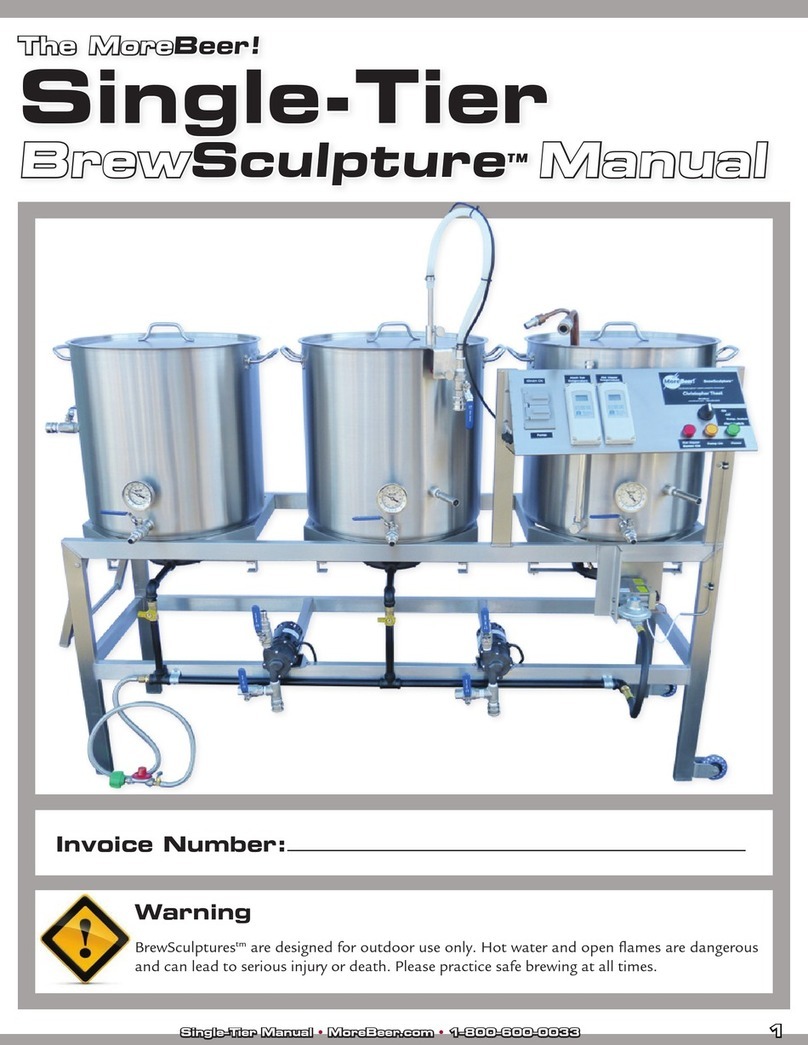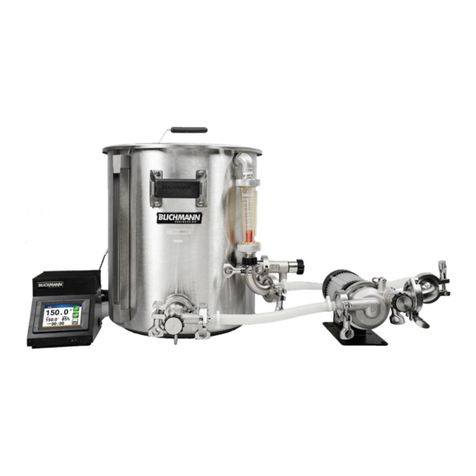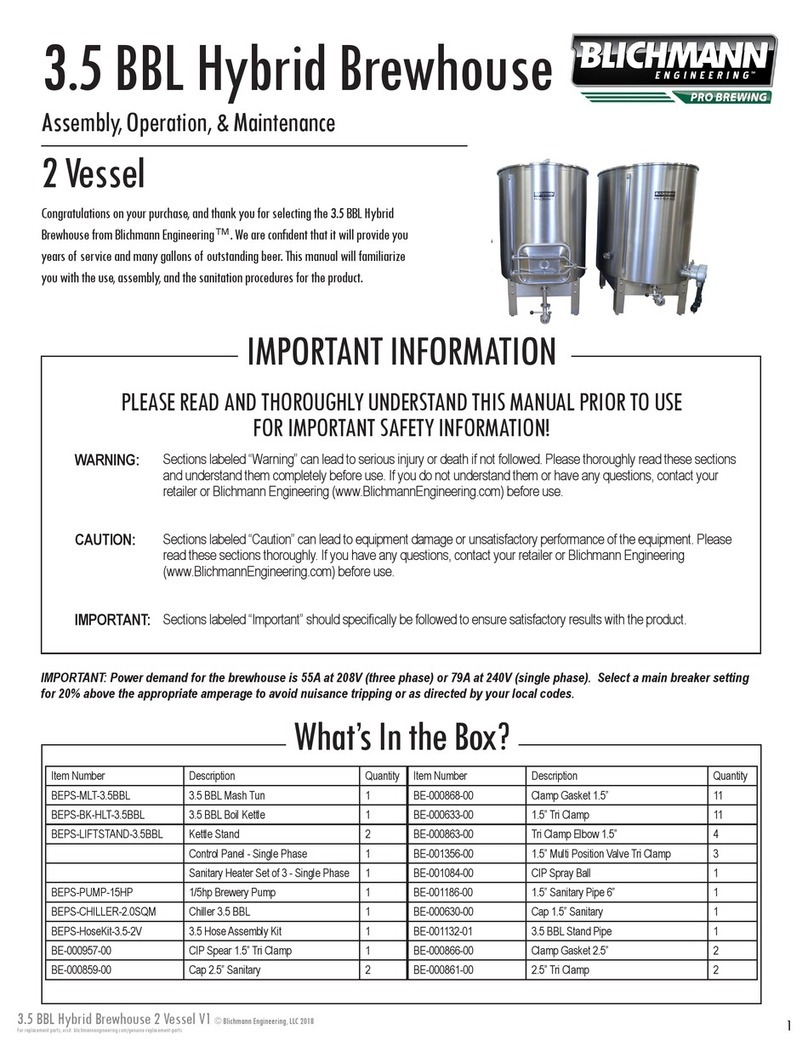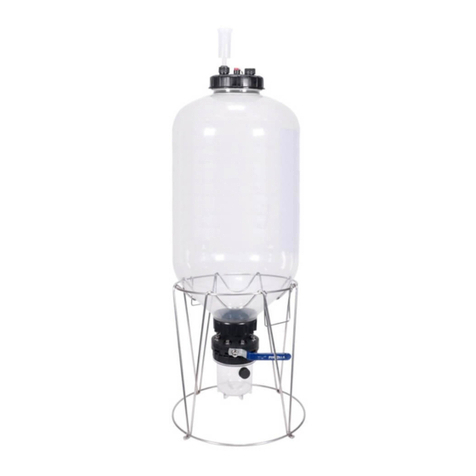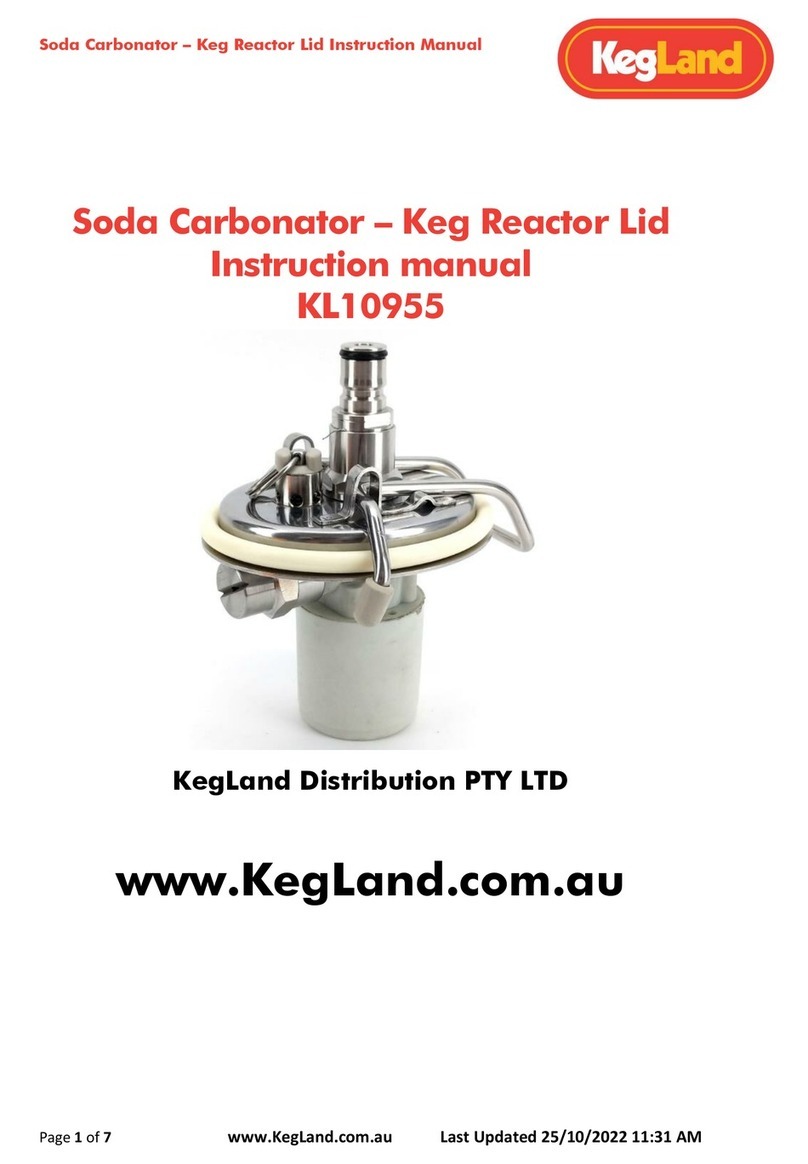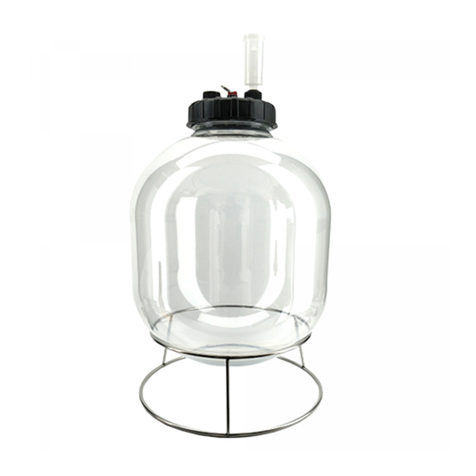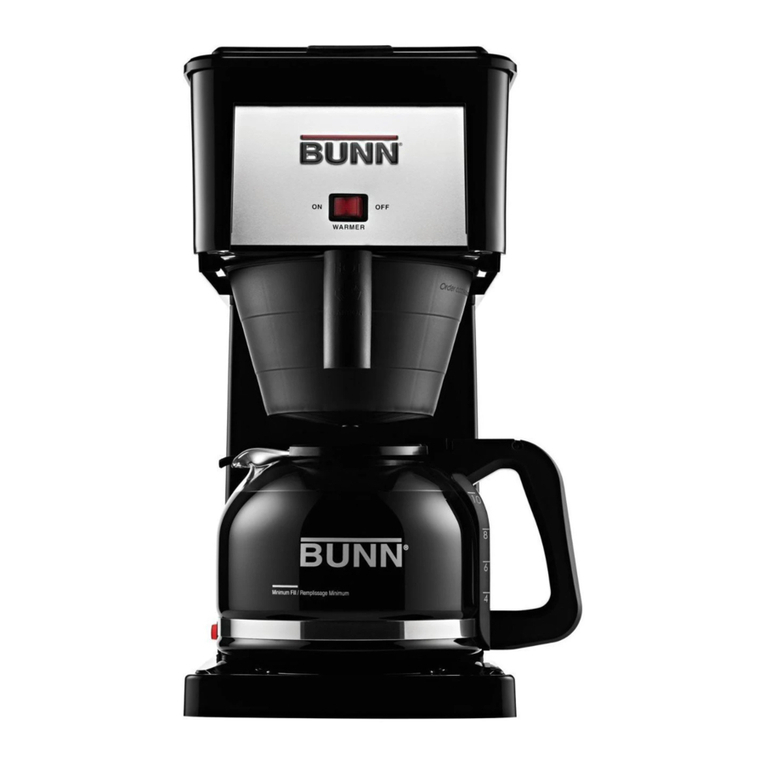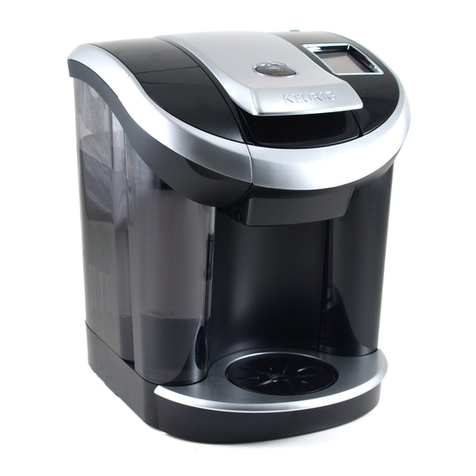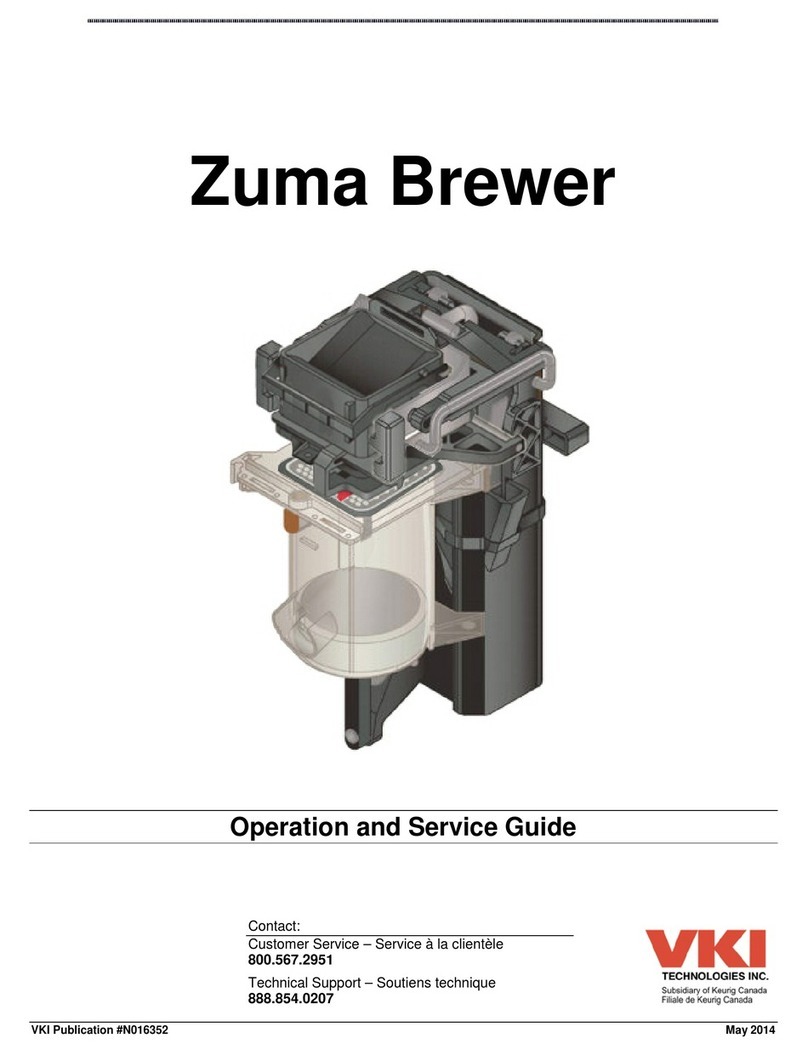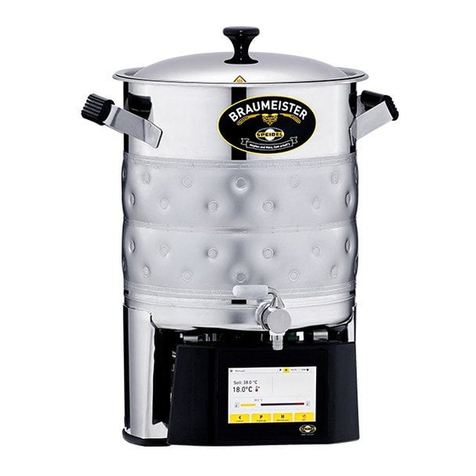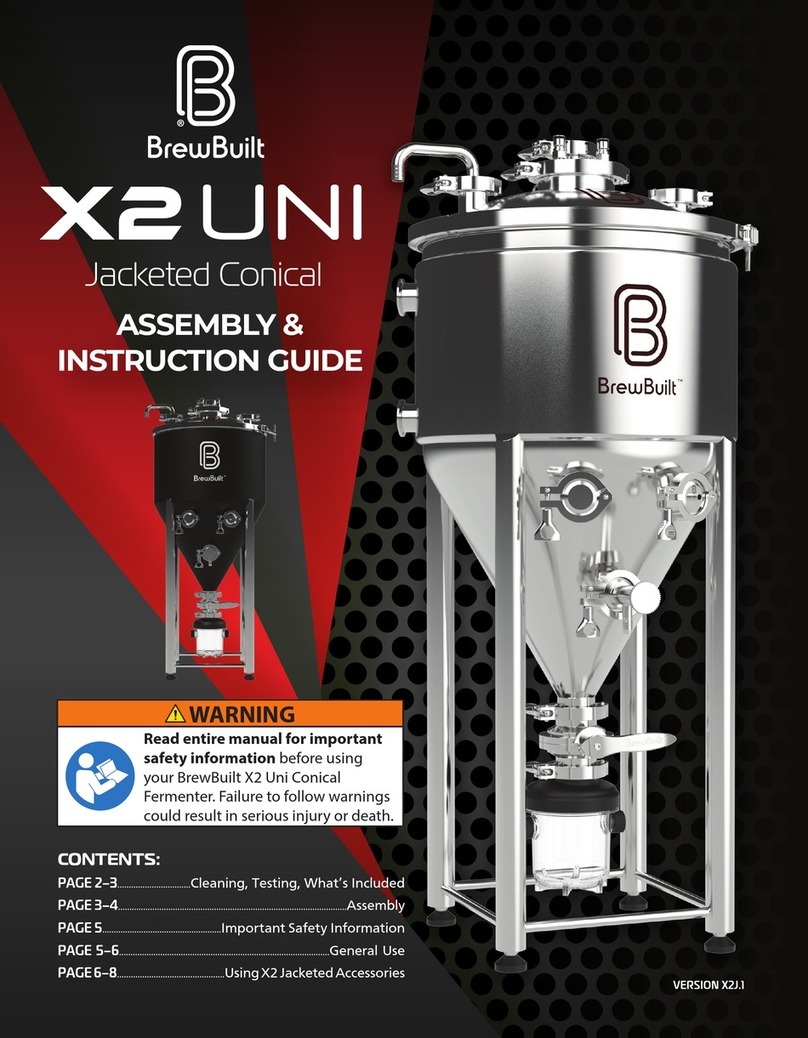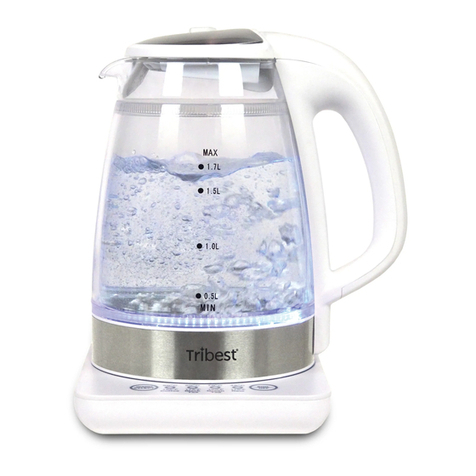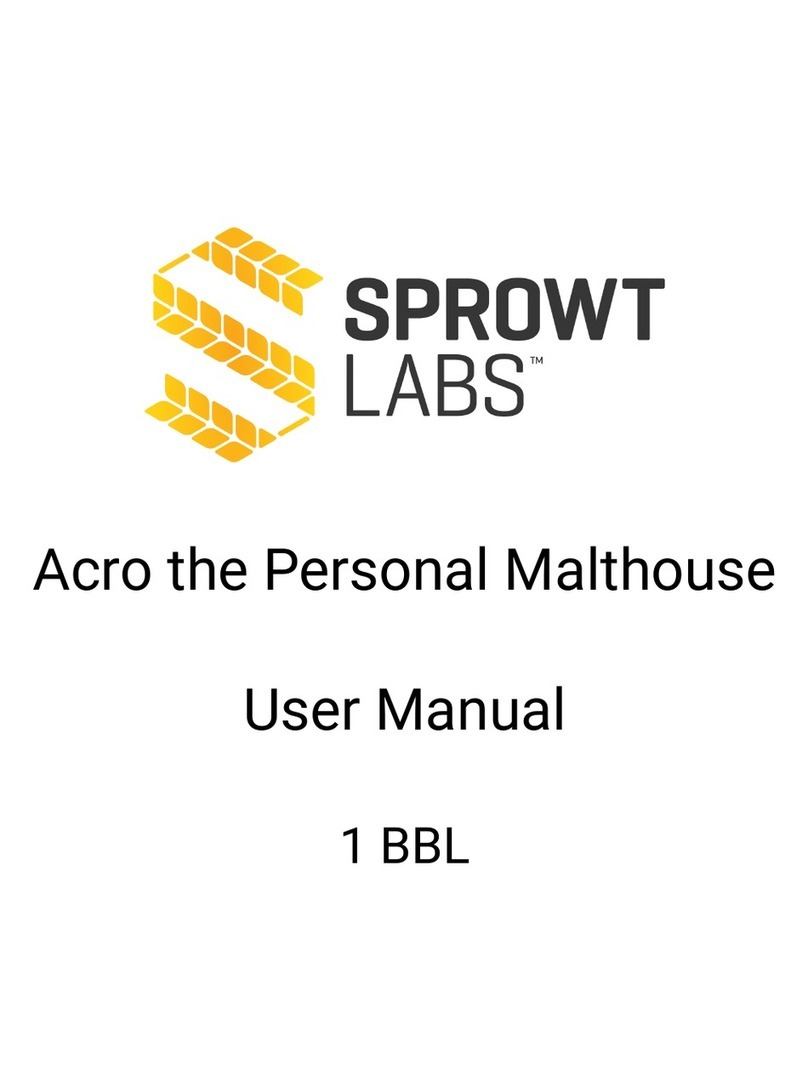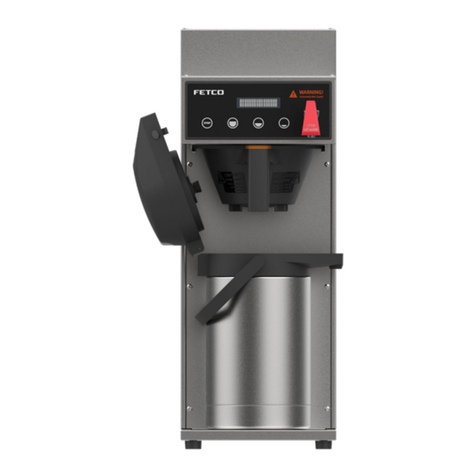FermZilla Tri-Conical 27L and 55L Instruction Manual
Page 2 of 13 www.KegLand.com.au Last Updated 9/06/2023 8:44 AM
WARNINGS
1. Do not loosen the tri-clover clamps when the FermZilla is under pressure. Purge all pressure
in the FermZilla and the collecon container before loosening the tri-clover clamps.
2. When not under pressure do not expose to liquids above 55°C (131°F). Only clean, wash or
sanise the fermenter with cold water.
3. When under pressure do not expose to any temperatures above 35°C (95°F).
4. Keep the fermenter out of direct sun or heat. Do not expose to UV rays of any sort.
5. If you are using a heat belt to warm the fermenter then only have the heat belt sing below
the liquid level. Do not use an unregulated heat source, only use heat sources which are
plugged into a temperature controller.
6. Under no circumstances apply more than 2.5bar (35PSI) to the fermenter tank and do not
connect an unregulated pressure source. If you connect external pressure source ensure it
has independent PRV pre-set to 35psi or below.
7. A spunding valve set below 35psi must always be connected to the FermZilla when
fermenng under pressure or connected to the recipient keg when performing a closed
transfer.
8. Do not tamper with the pressure relief valve. Only use the red or yellow coloured pressure
relief valve supplied by KegLand.
9. If a vigorous fermentaon is experienced and krausen or wort has contacted the PRV, ensure
to remove the PRV and clean it before pung the FermZilla under pressure.
10. If the fermenter is scratched, damaged or has been under any physical duress; do not use the
fermenter under pressure.
11. If you use the fermenter under pressure hydro test the fermenter every 24 months to ensure
it is safe to use.
12. Only use chemical cleaners and sanizers that are approved by Kegland. These include: a)
Super Kill Ethyl Saniser Spray (eecve for sanising the exterior of the FermZilla) (KL05371)
b) StellarSan (mixed to the correct specicaon) (KL05357) c) StellarClean (not to be le in
the FermZilla for more than 30 minutes) (KL05494) … Or contact
hps://www.kegland.com.au/ for more informaon regarding other compable chemical
cleaning products.
13. Keep the buery valve always open during fermentaon. Only close the buery valve once
fermentaon has ceased and hydrometer readings are stable for 3 consecuve days.
14. Open the buery valve and ensure the system (including the collecon container) is
depressurized prior to removing the collecon container.
15. Do not over ghten carbonaon caps onto the threads of the lid or collecon container,
doing so could result in the thread being stripped. We recommend using the plasc
carbonaon and line cleaning caps (KL10788).
16. Do not over ghten the stainless-steel handles onto the neck of the FermZilla.
17. Avoid liing the FermZilla while full. If lled with wort avoid moving the FermZilla to prevent
scky wort from prevenng the PRV from operang.
18. Always conduct a leak test prior to beginning fermentaon.
19. Lubricang the Buery valve gate and all O-rings will prolong the life of the unit. We
recommend Haynes Foodgrade Lubrilm.
